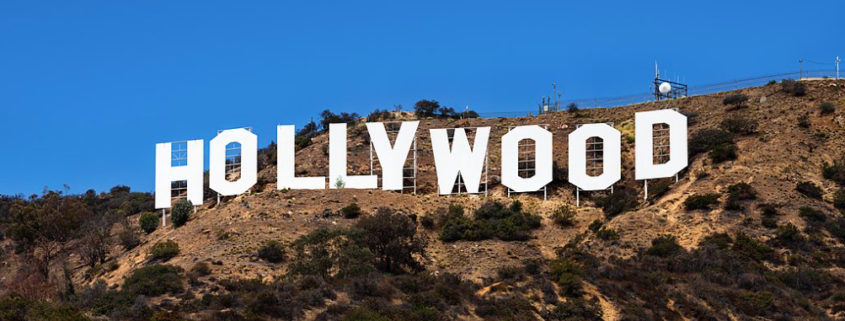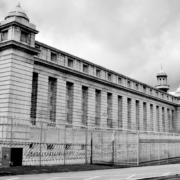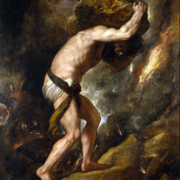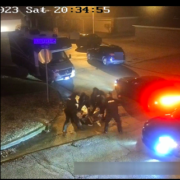Lights, Camera, Corrections
Many films have been made about convicts, prisons, or set in American correctional facilities.
On the one hand you have documentaries that provide a history of a particular correctional facility, a longstanding challenge, an incident or series of incidents (like a riot), the death penalty, and some of the solutions that have been attempted.
On the other hand, there are numerous commercially driven Hollywood movies that have been made that are either set in a jail, prison, or other correctional institution, or use this setting as the backdrop to tell a story.
A good prison film not only tells a compelling, entertaining, or interesting story, but also presents a realistic portrayal of life behind bars. This means that typical tropes like prison rapes, contraband smuggling, and heavily tattooed inmates working out in the prison yard are minimized.
But most of the movies set in correctional facilities seem to be driven by stereotypes of prison life rather than reality. This is understandable because jails and prisons are highly bureaucratic paramilitary organizations, doing time is mostly boring, and opportunities for the rehabilitation of inmates are typically slim to none. That’s why incarceration, at least in the United States, is most similar to a warehouse.
That being said, time and teaching modality permitting, I typically assign, and in order, four movies in my introductory undergraduate class in Corrections: Shawshank Redemption (1994), American Me (1992), Dead Man Walking (1995), and Brubaker (1980).
Why? Although some of my students work (or have worked), or aspire to work in correctional facilities, or they have been incarcerated, are correctional system contacted or affected, commercial/Hollywood films can be a good way to facilitate not just discussion among students about the role of corrections and the prison experience, but important issues connected to this important branch of the criminal justice system in the United States and elsewhere.
Although these films are dated, they either touch on, or provide important insights about persistent themes that impact the contemporary field and practice of corrections.
These issues include, but are not limited to: redemption, the role of prison reform, rehabilitation, how prisons are typically training grounds for criminals, prisonization, power relations, corruption, and hope.
While redemption is half of the title of Shawshank Redemption, it’s not clear if either Andy or Red, the co protagonists are redeemed in the sense of the term. In Dead Man Walking, however, there appears to be emphasis on the part of Sister Prejean to have Matthew Poncelet tell the truth and this will somehow unburden him and perhaps the families of the victims.
The concept of prison reform is hinted on in Shawshank Redemption, (e.g., the possibility that the prison will undergo some massive change with a new administration), the notion of prison reform is best articulated in Brubaker, when a smart person comes down to the prison to reform it. He is faced with challenges at every step of the way.
Although there are inklings of the concept of rehabilitation in American Me and Brubaker, rehabilitation is more significantly addressed in Shawshank Redemption. In this movie we witness, Red, Andy Dufresne’s best buddy, frequently visit to the parole board who ask him have you been rehabilitated, and the canned speech he gives them, until he tells them the truth.
Likewise, the notion that prisons are training grounds for inmates to learn to be better criminals is best exemplified in American Me (1992). The film traces the journey of Montoya Santana, as he gets deeper and deeper into the criminal underworld, from petty thief who is incarcerated as a juvenile, to murderer, and then the head of the Californian Mexican Mafia.
Although the concept of prisonization, where inmates slowly adapt to the prison environment, is touched on in Brubaker (i.e., the necessity of inmates at Wakefield State Prison adapting to their circumstances), it is more thoroughly depicted in both Shawshank Redemption and American Me. In the former we see Andy, adapt to the norms of Shawshank, and Montoya adapt and utilize the norms in the successive correctional facilities he is incarcerated in. In Shawshank Andy slowly and successfully adapts to and bond with his fellow inmates, the uncaring nature of the correctional officers, and learns how to bond with, and find his place in the power relationship amongst the contenders for power. Most importantly he realizes that he has some knowledge and skills that may be of use to all constituencies.
The issue of institutional corruption is embodied by the warden Norton in Shawshank Redemption, and the former warden and the complicit trustees in Brubaker. We learn that corruption is longstanding and functional in the operation of both prisons. And although the problem of corruption is known beyond these prisons (including all the way up to the state government), until there is some highly publicized attention, or political crisis it is not significantly addressed.
Hope is a dominant theme in both Shawshank Redemption and Dead Man Walking. Shawshank Redemption traces the story of Andy Fontaine, who is wrongfully convicted of a crime, but survives several years in Shawshank prison hoping that one day that the truth of his criminal case will come to public attention and once there is his opportunity, the warden crushes his chances. Red says that hope will kill a young man. Throughout these movies issues of hope is also prevalent in Brubaker from the prison warden side, it is how he is trying to do his best, but is up against all odds. It also introduces students to the power of politics, particularly at the state level, where there is corruption and a perception of not wanting to appear soft on crime to ones loyal constituents lest they fail to re-elect you next year.
One of the most important themes among all the films, however, is power and power relations; how it manifests, and how it bounds relationships among the inmates, between the correctional officers and the prisoners, and from the warden down to the correctional staff, in all four movies. We see power relations unfold in Brubaker, not simply between him and the trustees, but between Brubaker and the governor of the state of Arkansas. The source of power comes in many forms from physical power, to economic power, to the power in numbers and the threat of physical power and death. And we see a complex power dynamic unfold between sister Preajan and x on death row.
In the world of asynchronous instruction and remote Zoom classes, pedagogical tools like movies can enhance class discussion and increase engagement with the subject matter. However, it’s important to remember that these tools are means to an end, not ends in themselves. Ultimately, the success of the classroom experience depends on both motivated and proactive instructors who can inspire their students, as well as students who are willing to actively participate and contribute.
Photo credit:
Title: The iconic Hollywood Sign in Hollywood Hills
Photographer: Thomas Wolf











